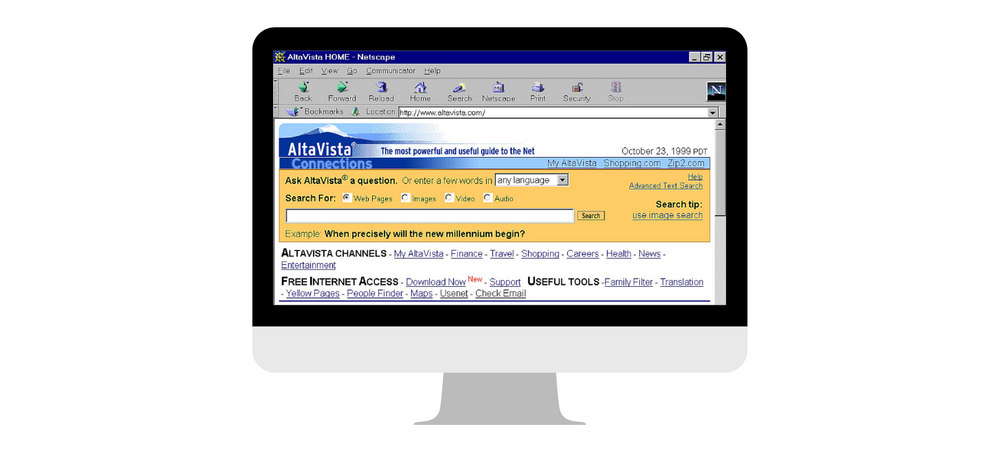Table of Contents
Web 3.0 is a new generation internet that should improve the version we are currently using with the help of the concept of decentralization and blockchain technology. What exactly is Web 3.0? How does it work and what changes will it bring us?
Whether or not you’re interested in technology and technological innovation, you’ve probably come across the term Web 3.0 often lately.
Summary
- What is Web 3.0 and how should it work?
- 4 main elements of Web 3.0
- Top 4 Benefits of Web 3.0
- How will blockchain and cryptocurrencies be linked to Web 3.0?
It is currently the most popular and favorite word of many technology experts, crypto enthusiasts and investors. Many of them use the term Web 3.0 as a term to cover all the innovations that will soon improve the Internet we currently use.
In this next phase of Internet development, the emphasis will be on decentralization , artificial intelligence (AI) and an economy driven by blockchain technology and cryptocurrencies .
Why is there a sudden phase of Internet development? If we were to explain this in an abbreviated version, the need for a new version of the web arose after many users realized that they had no control over their own data, and that they depended too much on rules imposed by third parties.

These are the features of the Internet we use today, better known as Web 2.0. To make it easier to understand the chronology and understand what Web 3.0 should improve, let’s go back to the very beginnings of the Internet.
The first generation of the Internet, or Web 1.0, was used from the 1990s to the early 2000s, when the Internet was seen as a means to democratize access to information. In terms of user experience, the pages were mostly static, with no possibility for quality content creation.

That has changed with the advent of Web 2.0 that we currently use. Static websites have been replaced by interactive content (which can be created by users themselves) that millions of people can access in a quick and easy way. Web 2.0 has experienced exponential growth thanks to innovations such as mobile internet access and social networks.
Web 2.0 and the Problem of Centralization
With the web, 2.0 billion people have gained access to amazing technologies that have made life easier, and many of them have been free.
But web 2.0 also had its downsides, most notably the centralization of large companies such as Google, Amazon, Facebook, Twitter, etc. Tech giants were created to establish some order on the Internet.
Critics say they have gained too much power over time. Centralization has negatively affected startups, creators and many other groups. Since everyone is present on the channels of centralized companies, their actions, and even ultimately their success, depend on the rules dictated by centralized companies.
The simplest example is when Google or Facebook changes the algorithm that will affect the visibility of the post. Such changes most often shorten the reach of posts, affecting content creators, businesses, and small artisans who have to spend more money on advertising if they want to interact with more people.
Centralization has also indirectly affected many social tensions that we can often see in discussions on social networks, the explosion of fake news and the emergence of bots whose comments affect public opinion.
These are all problems that will be discussed in the coming years. It is because of these shortcomings that the need to improve the Internet has intensified, and Web 3.0 in combination with blockchain technology and cryptocurrencies has emerged as a solution that will fully democratize the Internet.
What is Web 3.0 and how should it work?
It should be noted that web 3.0 does not have an accurate and structured definition as we are still in the early stages of development and a standardized solution has yet to be found that will adapt and integrate new technologies into the new web.
Web 3.0 is a term used to describe a new generation of Internet that will use peer-to-peer (P2P) technologies such as blockchain, open source software, metaverse, and the Internet of Things.
Web 3.0 will rely on Web 1.0 and Web 2.0, combining their best features.
How will the user benefit from the new internet? Web 3.0 will make the Internet more decentralized and open. Today, users still rely on network service providers to monitor the information that passes through their systems.
With the advent of Web 3.0, people will be able to control their own data and use all applications and services from a single account, while all activities will be stored on the blockchain.
Is Web 3.0 the same as the Semantic Web?
The Semantic Web is a term coined by Tim Berners Lee, the man who invented the concept of the World Wide Web, which is why he was nicknamed the “father of the Internet“.
With this term, Berners Lee wanted to describe a new and more efficient way through which users will get more realistic data that will be easily able to relate to real-life situations.
In the Semantic Web, the browser should serve as a personal assistant to users. What would it look like in practice?
Let’s say you want to buy a new TV, and after the purchase you plan to stop by for some fast food. Your first step for sure would be to search for stores that have the best deal for the type of TV you want. After that, you would search the nearest fast food place and type of food.
For all this you would surely search a few websites and read a sea of reviews. But the Semantic Web browser should work to compile a “best deal” based on your previous purchases and interests, location, and budget to save you time.
This is a simplified example that explains the idea behind the Semantic Web. Many of these features are similar to what Web 3.0 should have, which is why experts identify them as the same thing.
However web 3.0 should be more advanced than the semantic web. In addition to the previously mentioned peer-to-peer technology, blockchain, artificial intelligence, Web 3.0 should use elements of the Semantic Web, and its web predecessors to provide the most advanced experience.
4 Main Elements of Web 3.0
Although there is still no standardized definition, Web 3.0 should have the following features:
1. Decentralization
Big tech and internet companies today are deciding how each piece of information will be ranked, filtered, which content creators will be promoted and which will be banned. Web 3.0 should shift the decision-making on such issues to users (community) through open and transparent mechanisms.
Instead of storing information in one database (for example, Amazon’s database as one company), everything will be stored in multiple locations to ensure decentralization, and the user will decide how his data will be used.
2. Registration on the Site Without Additional Authorization
The English translation of this feature is “Permissionless” and “Trustless”. When interacting with websites and content, you must leave all information with the central server, and you must re-register for each new page.
“Permissionless” and “Trustless” means that you will be able to access everything with one single account. A good example of this practice is digital wallets with which you can easily connect after which you can easily consume the content of the website.
All applications and websites on Web 3.0 will be able to function this way thanks to decentralized applications.
3. Artificial Intelligence
Some features of artificial intelligence are already in use. You’ve probably noticed that when writing emails or chat messages, an app or service offers you pre-prepared forms based on what you wrote at the time.
Web 3.0 is expected to be able to understand information like humans with the help of powerful and more advanced computers. Web 3.0 will also implement Machine learning , a branch of artificial intelligence that uses data and algorithms to mimic the way people learn, gradually improving accuracy.
4. Connectivity with all Devices
Total content would be readily available on all devices and applications connected to the Internet. The number of devices that could connect to the Internet has increased. It is believed that with the advent of Web 3.0 , the Internet of Things will also be widely used . Currently, the most famous project in the crypto industry that develops the Internet of Things solutions is IOTA with innovative “Tangle” technology.

Top 4 Benefits of Web 3.0
1. There is no Central Body
Because intermediaries are removed from the equation, they will no longer control user data. This reduces the risk of censorship by governments or corporations.
2. Better Flow of Information
As more devices connect to the Internet in the future, larger datasets will be able to be analyzed, which can ultimately help provide accurate information that better suits the specific needs of each user.
3. More Efficient Internet Search
Finding the best results through a web browser can sometimes take a long time. With Web 3.0, the results of what we search will become more accurate thanks to metadata and understanding the context of what we search.
4. Improved Advertising
Today, few people like to be bombarded with ads at every turn. However, ads can be useful if they meet someone’s needs. Web 3.0 will use artificial intelligence systems to improve and customize advertising to appear according to user needs.
How will blockchain and cryptocurrencies be linked to Web 3.0?
Blockchain as well as web 3.0 share similar principles, the most important of which is decentralization. But blockchain contributes to the concept of Web 3.0 in many ways.
One of them is a unique digital identity that provides all users with complete security, but also transparency in the execution of all transactions.
But perhaps the greatest contribution that blockchain technology would give to the Web 3.0 is manifested in the ability to create cryptocurrencies, and especially in the use of cryptocurrencies for payments .
The reason why cryptocurrencies are most often mentioned in the context of payments (along with transparency and security) is low transaction prices and speed.
The cost of paying online will be much simpler and cheaper than paying by card or online banking. This will also be convenient for sellers of content, services or goods as it will initially eliminate fees to payment service providers.
It is important to emphasize that the cost of transactions made through cryptocurrencies can vary. Many cryptocurrencies have different purposes, and therefore network fees may be different.
Disclaimer: The opinion expressed here is not investment advice – it is provided for informational purposes only. It does not necessarily reflect the opinion of EGG Finance. Every investment and all trading involves risk, so you should always perform your own research prior to making decisions. We do not recommend investing money you cannot afford to lose.
 English
English Français
Français Español
Español Bahasa Indonesia
Bahasa Indonesia 中文 (中国)
中文 (中国) Русский
Русский Português
Português Deutsch
Deutsch

